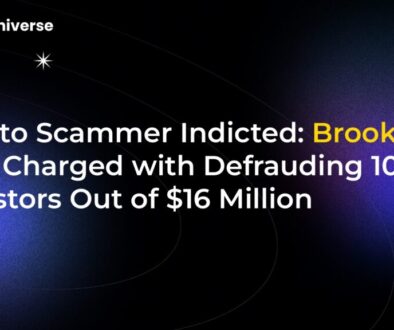The Future of Crypto: 3 Bold Predictions You Can’t Afford to Ignore

The Crypto Landscape Is Changing: Are You Ready?
The wild, speculative days of cryptocurrency’s youth are maturing into something far more integrated and profound. As major financial institutions and even entire nations embrace blockchain technology, the ground is shifting beneath our feet. The question is no longer *if* crypto will be part of our future, but *how* it will shape it.
Looking ahead, three major trends are set to define the next era of digital assets. From becoming the boring-but-essential plumbing of finance to solidifying its role as digital gold, and even embracing its wilder, speculative side, the future of crypto is multifaceted. Here are the 3 Big Predictions for the Future of Cryptocurrency that every investor should understand.
Prediction 1: Utility Takes Center Stage (And Crypto Gets “Boring”)
The first, and perhaps most significant, shift is the move from hype to utility. The days of projects rocketing to fame on a whitepaper and a prayer are fading. In their place, blue-chip cryptocurrencies like Ethereum (ETH), Solana (SOL), and XRP are quietly weaving themselves into the fabric of the global financial system.
I predict this trend will accelerate until these powerful blockchains are so fundamental to financial operations that they lose their speculative mystique. They’ll become as “boring”—and as essential—as the cloud servers or payment processing systems we rely on today.
We’re already seeing this happen in two key areas:
- Payments and Settlements: In 2023, payments giant Visa expanded its stablecoin settlement program to the Solana network to facilitate faster, cheaper cross-border money movement. This wasn’t a flashy headline for most people, but it was a monumental step in validating blockchain as a superior backend technology for global finance.
- Asset Tokenization (RWAs): The concept of tokenizing real-world assets (RWAs) like real estate, bonds, and private equity has moved from theory to practice. Asset management titans like BlackRock are actively experimenting with managing funds on-chain. The market for tokenized RWAs has already swelled to over $29 billion, signaling a massive shift in how we own and trade value.
What this means for investors: As utility deepens, the investment profile of these assets will likely change. Expect less of the explosive, lottery-like spikes of the past and more steady, sustainable growth, similar to investing in foundational technology infrastructure.
Prediction 2: Bitcoin Solidifies Its Throne as Digital Gold
While other cryptocurrencies focus on utility, Bitcoin continues to carve out its unique niche as the world’s premier digital store of value. With a market capitalization already exceeding $2.3 trillion, it has proven its resilience and appeal as a long-term savings vehicle.
My second prediction is that Bitcoin’s market cap will eventually rival that of gold. For context, the total market cap of gold is estimated to be around $24.8 trillion. For Bitcoin to reach a similar valuation, its price would need to increase by more than 10-fold from its current levels.
Is that realistic? History suggests it is. Over the last five years, Bitcoin grew by more than that amount, and its 10-year growth is closer to 50-fold. This isn’t just wishful thinking; it’s driven by two powerful forces:
- Digital Scarcity: Bitcoin’s hard-coded supply limit of 21 million coins makes it a uniquely deflationary asset in a world of endless money printing.
- Growing Adoption: The approval of spot Bitcoin ETFs has opened the floodgates for institutional investment. As more financial institutions, corporations, and even governments begin to hold Bitcoin as a reserve asset, demand is structurally set to outpace its limited new supply.
What this means for investors: The investment thesis for Bitcoin is a long-term one. It’s not about timing the market perfectly but about recognizing its growing role in the global financial system. As it continues to absorb a larger share of the world’s store-of-value demand, its growth trajectory remains incredibly strong.
Prediction 3: The Speculation Game Is Here to Stay
Now for the messy but undeniable prediction: speculation isn’t going anywhere. While utility and store-of-value narratives mature, the high-risk, high-reward world of altcoins and meme coins will continue to thrive. In fact, it will likely become even more prevalent and, surprisingly, more institutionalized.
The meme coin category alone boasts a market cap of over $85 billion. The next catalyst could be the approval of spot ETFs for leading meme coins like Dogecoin (DOGE), a move that would grant them unprecedented legitimacy and access to mainstream capital.
But why would serious banks and asset managers touch such volatile, utility-light assets? The answer is simple: client demand and fees. Financial institutions are driven by profit. If their clients want exposure to the potential moonshot returns of meme coins, these firms will create and sell the products to meet that demand, capturing lucrative management fees in the process.
What this means for investors: This corner of the market will remain the crypto wild west. While the potential for life-changing gains will always attract capital, the risks are equally extreme. The institutional embrace of these assets doesn’t validate their fundamentals; it simply validates the enduring power of hype and human hope in financial markets.
Conclusion: A Three-Lane Highway to the Future
The future of cryptocurrency isn’t a single story; it’s a sprawling narrative with multiple, parallel paths. On one path, we have the quiet, revolutionary integration of blockchain into our financial infrastructure. On another, we have Bitcoin’s steady march toward becoming a global reserve asset. And on the third, we have the chaotic, vibrant, and perpetual carnival of speculation.
Understanding these three distinct trends is key to navigating the market’s next chapter. Whether you choose to invest in the foundational utility, the long-term store of value, or the high-risk gamble, it’s clear that the crypto industry has evolved far beyond its simple beginnings. The only question left is, how will you participate?


